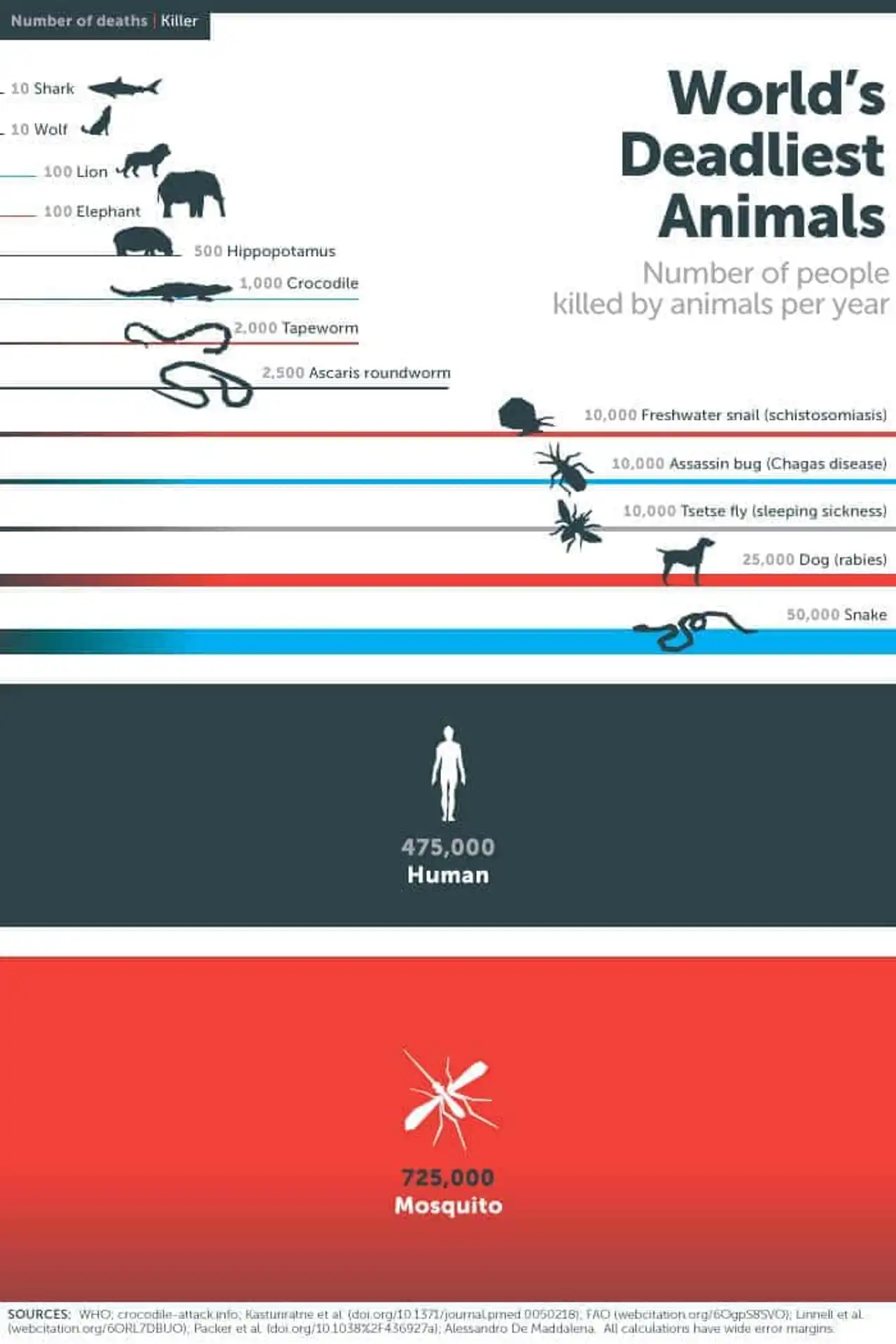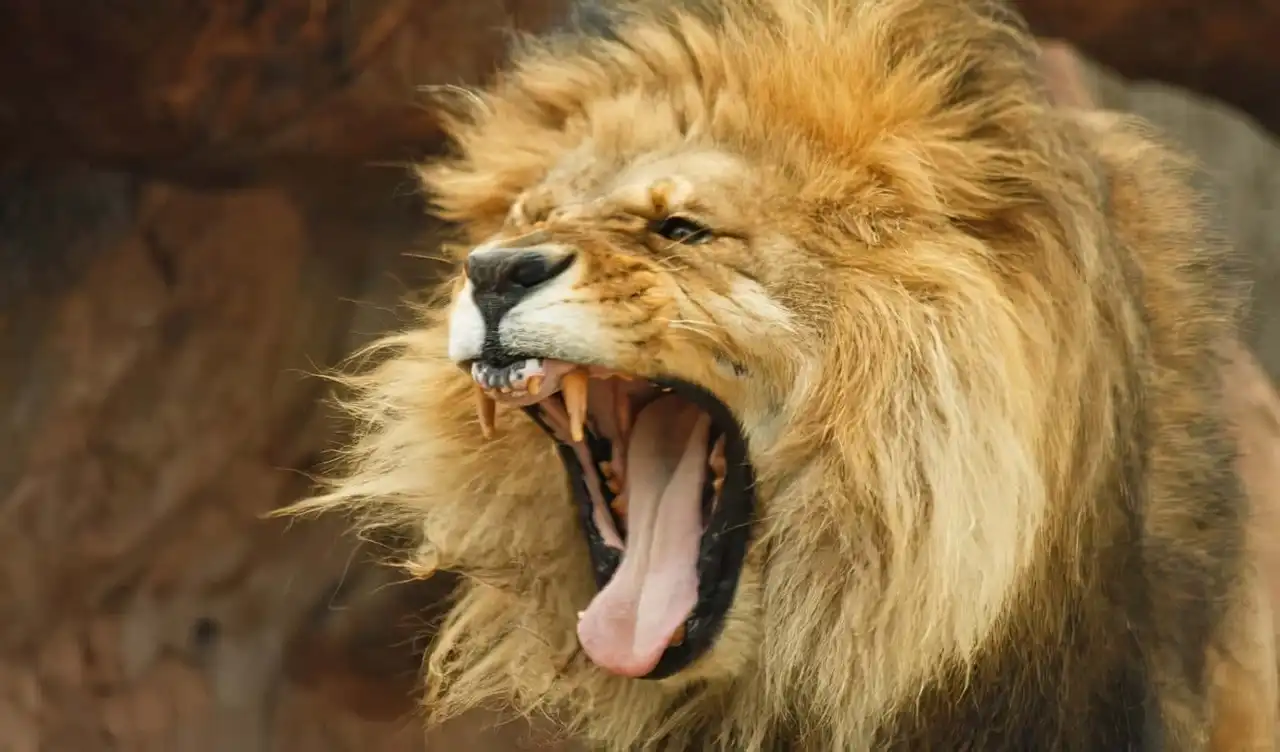What do you think is the most dangerous animal in the world? The shark? The bear? The snake? Or the man himself?
When we talk about the most dangerous animal for man , we do not speak of him who scares you most, or of the most venomous, but of the animal that kills the most humans in the world every year. By definition, a killer animal is dangerous. We sometimes say that the smallest beasts don't eat fat, but this infographic published on Bill Gates' blog a few days ago, maybe you'll be reacting...
People are afraid of sharks, especially since the movie The teeth of the sea but they only kill about ten people a year. For information, man kills 100 million sharks every year .
The dog, for example, kills 25,000 people a year, especially because of rabies. This figure is already huge if it is compared to the number of killed each year by lions (100) or crocodiles (1000). But the most devastating “animal” on Earth has no teeth, since it is the mosquito! This infographic shows that the mosquito is far ahead in the ranking of the most dangerous animals in the world; it kills 725 000 people a year:

Why are mosquitoes so dangerous for man? Because they are carrying devastating diseases. The worst is malaria (or malaria) malaria ), which kills 600,000 people a year. The mosquitoes also transmit dengue, yellow fever and encephalitis. It is also the insects that transmit the Zika virus. These insects are present all over the world except in Antarctica. In some parts of the world, mosquitoes even affect demographic trends and push people to live away from the coast.
The third most dangerous animal snake on earth
The third place is the snake. If it is feared, the snake is above all afraid of Man and only rarely approaches it. Snake mortal bites happen more often than they do! But the snake kills less than Man himself. The human being is almost the most dangerous “animal” with 475,000 murders committed each year.
After seeing this infographic and reading this information, maybe give you more attention to vaccines against these diseases, and to anti-moustic products.
Repeated on Gates Notes Main photo credit: Flickr – koorosh B








Loading comments ...